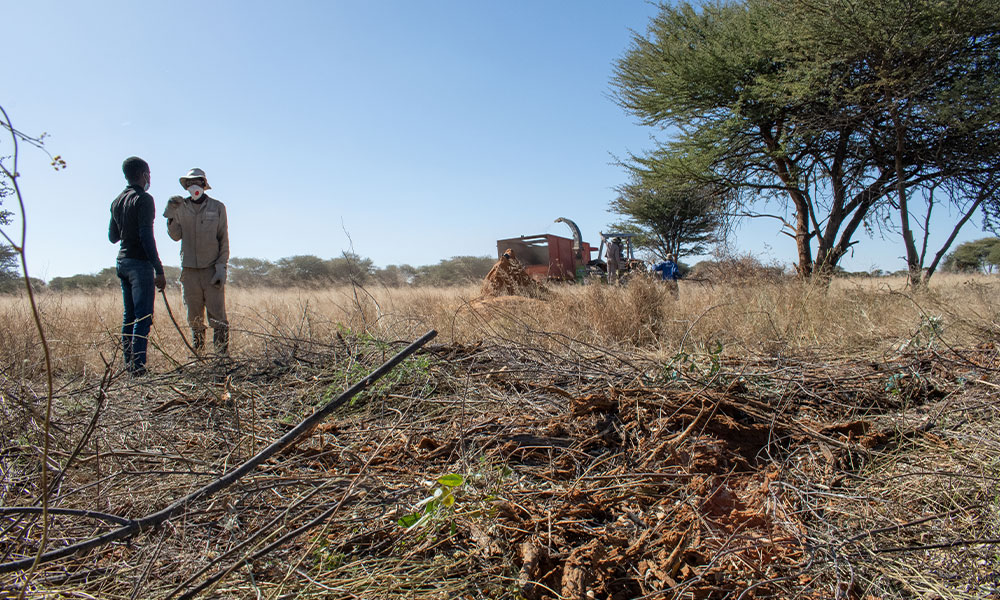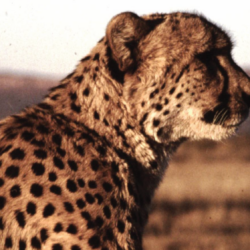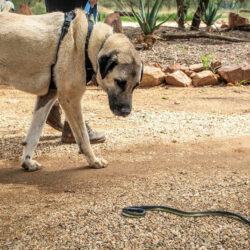Clearing the Land for Cheetahs
-

- by Brandy Morenko Campbell April 3, 2023

Article Summary: Response of woody vegetation to bush thinning on freehold farmlands in north‐central Namibia
Authors: Nghikembua M., Marker L., Brewer B., Leinonen A., Mehtätalo L., Appiah M., Pappinen A.
Millions of hectares, that were once open to Namibian savanna habitat, are now cluttered with thornbush shrub species of vegetation. Human influences on the land have led to dense, woody, bush-encroached habitat that reduces the ability of animals to graze and hunt, reduces livestock and farm profitability, and reduces prey populations. Habitat restoration efforts to strategically thin and utilize the woody thornbush, while leaving some behind for wildlife shelter and browsing, have been ongoing for years. However, the impact on species regrowth and the distance predators can see across the terrain remained unexplored until recently.
CCF researchers wanted to understand the differences between land that had been thinned of woody vegetation versus land that had not been. They were interested in how the height, size, distribution, and species abundance varied, as well as evaluating how thinning affected visual lines of sight, which is especially important for cheetah hunting success. Three freehold farms that had been thinned by hand several years prior and thinned by 50% were included in the study.


As one might expect, researchers found that non-thinned plots of land had more trees and shrubs. Interestingly, the main species of encroaching thornbush, sickle bush and black-thorn acacia, were found in lower numbers than in other areas. Conversely, the sickle bush was not reduced in thinned areas, and umbrella thornbush growth appeared to be accelerated by thinning practices. Chemical application of herbicides did not help maintain mechanically thinned areas specifically, since they showed greater re-encroachment. Thinned areas did provide longer sight lines, but visibility was still less than what is preferred by cheetahs.
Thinning encroached thornbush habitats restored the land to shorter low-cover shrubland for several years following thinning. While some species of thornbush flourished and others remained, the land was able to maintain a more favourable less woody habitat. Grasses can grow to support grazing animals and provide improved visual lines of sight for animals that require it to hunt or evade predators.
Continued research will be important to monitor rapidly changing climate effects on vegetation in encroached savanna. Additional monitoring of encroachment regrowth rates will be valuable in developing thornbush thinning management strategies that can simultaneously benefit wildlife and maximize livestock farming. This study emphasizes how habitat restoration efforts can be successfully used as part of a conservation program, but efforts must be sustained using knowledgeable approaches that utilize proven methods.
Related Reading
-
December 4, 2024
Double Your Donation for the Cheetah -
June 15, 2024
Snake Aversion Training




